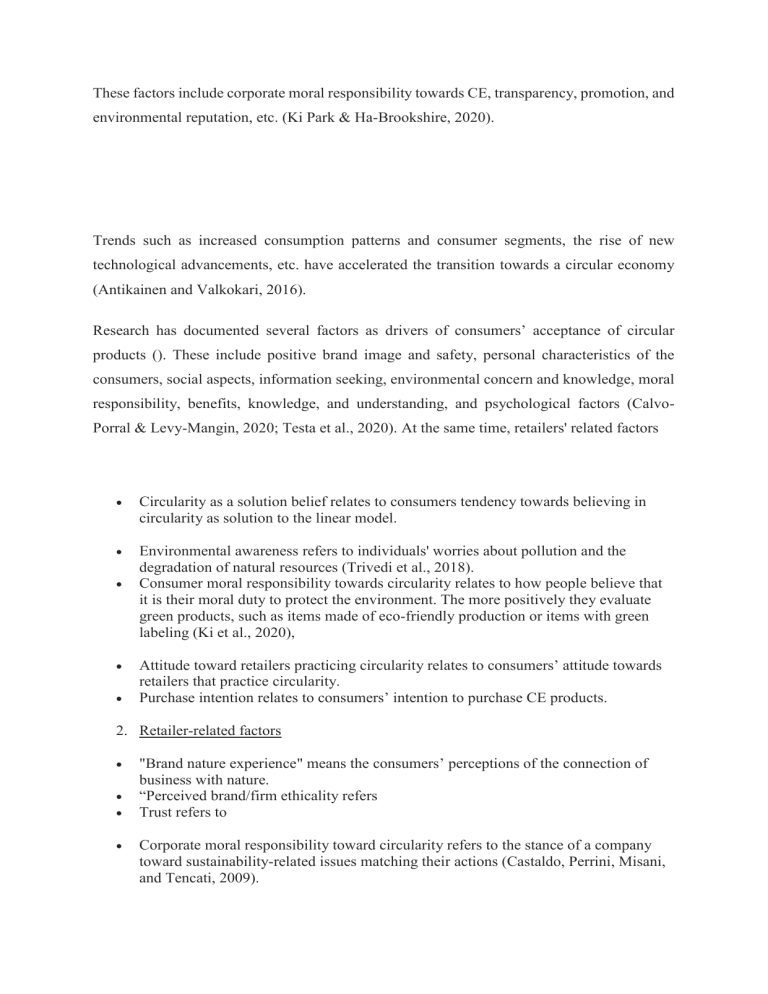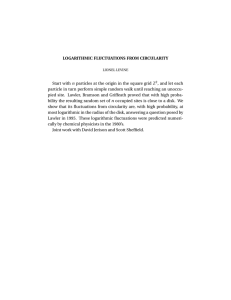
These factors include corporate moral responsibility towards CE, transparency, promotion, and environmental reputation, etc. (Ki Park & Ha-Brookshire, 2020). Trends such as increased consumption patterns and consumer segments, the rise of new technological advancements, etc. have accelerated the transition towards a circular economy (Antikainen and Valkokari, 2016). Research has documented several factors as drivers of consumers’ acceptance of circular products (). These include positive brand image and safety, personal characteristics of the consumers, social aspects, information seeking, environmental concern and knowledge, moral responsibility, benefits, knowledge, and understanding, and psychological factors (CalvoPorral & Levy-Mangin, 2020; Testa et al., 2020). At the same time, retailers' related factors Circularity as a solution belief relates to consumers tendency towards believing in circularity as solution to the linear model. Environmental awareness refers to individuals' worries about pollution and the degradation of natural resources (Trivedi et al., 2018). Consumer moral responsibility towards circularity relates to how people believe that it is their moral duty to protect the environment. The more positively they evaluate green products, such as items made of eco-friendly production or items with green labeling (Ki et al., 2020), Attitude toward retailers practicing circularity relates to consumers’ attitude towards retailers that practice circularity. Purchase intention relates to consumers’ intention to purchase CE products. 2. Retailer-related factors "Brand nature experience" means the consumers’ perceptions of the connection of business with nature. “Perceived brand/firm ethicality refers Trust refers to Corporate moral responsibility toward circularity refers to the stance of a company toward sustainability-related issues matching their actions (Castaldo, Perrini, Misani, and Tencati, 2009). Circularity advertising refers to out-of-store advertising using appeals and messages to influence consumers' attitudes and purchase intentions for CE products (Su et al., 2021). 3. Moderating factors Perceived quality Price Environment impact 4. Demographic factors Age, Gender, Education, IncomeThe conceptual framework of this study is as follows (See Fig 1.0).




